Physical Impacts of Trauma and How to Foster Resolution
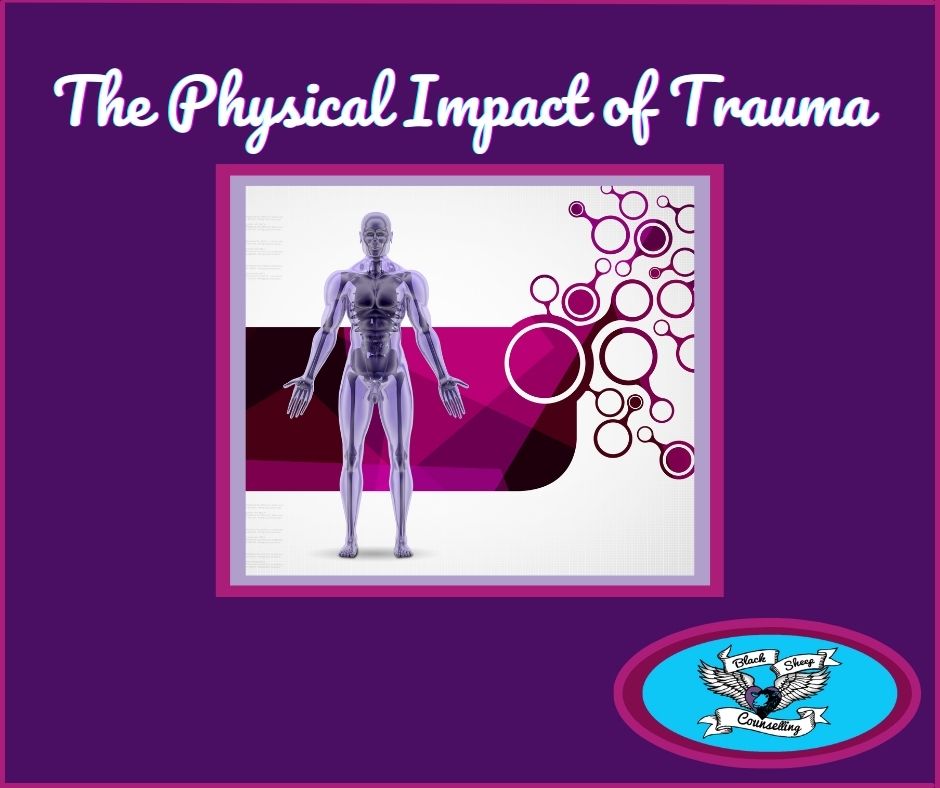
BRAIN ARCHITECTURE: Shrinkage in the prefrontal cortex, corpus callosum, and hippocampus, as well as enlarged amygdala (causing increased reactivity).
ADDRESS HEALING by fostering safe, stable, and nurturing relationships ~ safe relationships override stress hormones by increasing the level of oxytocin, a hormone that inhibits the amygdala (the state of calm this produces is referred to as the “Vagal Brake”, as coined by Stephen Porges, the developer of Polyvagal Theory). Other helpful tools for healing include:
- Humming, singing, chanting. Increases heart rate variability, initiates the work of a vagal pump. Energetic singing activates both sympathetic nervous system and vagus nerve. Singing increases oxytocin.
- Yoga. Yoga increases vagus nerve and parasympathetic system activity. Maintaining a Yoga practice has been associated with improvements in mood and anxiety by increasing thalamic GABA levels.
- Breathing Exercises. Deep and slow breathing stimulates the vagus nerve. Your heart and neck contain neurons that have receptors called “baroreceptors. “These specialized neurons detect your blood pressure and transmit the neuronal signal to your brain (NTS), which goes on to activate your vagus nerve that connects to your heart to lower blood pressure and heart rate. The result is a lower fight-or-flight activation (sympathetic) and more rest-and-digest (parasympathetic).Baroreceptors can be variably sensitive. The more sensitive they are, the more likely they are going to fire and tell your brain that the blood pressure is too high and it’s time to activate the vagus nerve to lower it. Slow breathing, with a roughly equal amount of time breathing in and out, increases the sensitivity of baroreceptors and vagal activation, which lowers blood pressure and reduces anxiety by reducing your sympathetic nervous system and increasing your parasympathetic system. For an average adult, breathing around 5-6 breaths per minute can be very helpful. Tip: You need to breathe from your belly and slowly. That means when you breathe in, your belly should expand or go out. When you breathe out your belly should cave in. The more your belly expands and the more it caves in, the deeper you’re breathing.
- Cold. When feeling anxious or shut down, try splashing cold water on your face, or place an ice cube on your face and gently move around from your lips to your scalp line. Studies show that when your body adjusts to cold, your fight-or-flight (sympathetic) systems declines and your rest-and-digest (parasympathetic) system increases (this is mediated by the vagus nerve).
- Laughter. Try watching a comedy (even better if shared with someone).
- Psychotherapy with a practitioner that feels safe to your nervous system.
- Gentle Touch. Try Havening (image below):

BRAIN WAVES: Connectivity among brain regions and brain waves are impaired. The thinking part of the brain is underactive for people with PTSD which hinders problem-solving, concentration, memory, decision-making, organization, motivation, and emotion-regulation. The ability to understand experience is diminished which creates difficulty connecting to pleasurable experiences and positive affect, the brain’s ability to use imagination is shut down (thus limiting the ability to envision adaptive solutions, engage in goal setting), and the brain’s speech center goes offline. Increased anxiety and possibility of seizures.
ADDRESS HEALING through neurofeedback therapy. Massaging certain areas like the carotid sinus (located on your neck) can stimulate the vagus nerve and has been evidenced to reduce the occurrence of seizures.
NEURAL PATHWAYS: Trauma often exacerbates negativity bias, diminishes positive affect, and gives rise to maladaptive coping mechanisms.
ADDRESS HEALING through neurofeedback, mindfulness (see here: https://blacksheepcounselling.com/2020/01/why-mindfulness-2/), gratitude practice (see here: https://blacksheepcounselling.com/2018/01/gratitude/), mindful self-compassion (see here: https://blacksheepcounselling.com/2017/03/mindfulness-self-compassion/) and meditation.
Here is a meditation to try:
Loving-kindness meditation (below) increases vagal tone, as measured by heart rate variability.
Brief Instructions for Loving-Kindness Meditation
To practice loving-kindness meditation, sit in a comfortable and relaxed manner. Take two or three deep breaths with slow, long and complete exhalations. Let go of any concerns or preoccupations. For a few minutes, feel or imagine the breath moving through the center of your chest – in the area of your heart.
Metta is first practiced toward oneself, since we often have difficulty loving others without first loving ourselves. Sitting quietly, mentally repeat, slowly and steadily, the following or similar phrases:
May I be happy. May I be well. May I be safe. May I be peaceful and at ease.
While you say these phrases, allow yourself to sink into the intentions they express. Loving-kindness meditation consists primarily of connecting to the intention of wishing ourselves or others happiness. However, if feelings of warmth, friendliness, or love arise in the body or mind, connect to them, allowing them to grow as you repeat the phrases. As an aid to the meditation, you might hold an image of yourself in your mind’s eye. This helps reinforce the intentions expressed in the phrases.
After a period of directing loving-kindness toward yourself, bring to mind a friend or someone in your life who has deeply cared for you. Then slowly repeat phrases of loving-kindness toward them:
May you be happy. May you be well. May you be safe. May you be peaceful and at ease.
As you say these phrases, again sink into their intention or heartfelt meaning. And, if any feelings of loving-kindness arise, connect the feelings with the phrases so that the feelings may become stronger as you repeat the words.
As you continue the meditation, you can bring to mind other friends, neighbors, acquaintances, strangers, animals, and finally people with whom you have difficulty. You can either use the same phrases, repeating them again and again, or make up phrases that better represent the loving-kindness you feel toward these beings. In addition to simple and perhaps personal and creative forms of metta practice, there is a classic and systematic approach to metta as an intensive meditation practice. Because the classic meditation is fairly elaborate, it is usually undertaken during periods of intensive metta practice on retreat. Sometimes during loving-kindness meditation, seemingly opposite feelings such as anger, grief, or sadness may arise. Take these to be signs that your heart is softening, revealing what is held there. You can either shift to mindfulness practice or you can—with whatever patience, acceptance, and kindness you can muster for such feelings—direct loving-kindness toward them. Above all, remember that there is no need to judge yourself for having these feelings.
NEUROTRANSMITTERS: Trauma creates vulnerabilities to addiction and maladaptive compulsions because dopamine transmitters/receptors are not optimally developed or become damaged. There is reduced motivation and focus, increased fatigue and lower serotonin gives rise to depressive disorders.
ADDRESS HEALING by prioritizing gut heath. Our gut is akin to a “junior brain” as it contains over 200 million neurons, affects our mood and behaviour, and is the source of our intuition (our internal knowingness). Trauma and mental illness are known to damage our gut biomes (the colonies of bacteria that live inside of us and optimize health). Poor gut health is a major factor in neurotransmitter imbalances because neurotransmitters are made in the gut and gut inflammation leads to brain inflammation. Talk to your health care provider for personalized ways to increase your gut health.
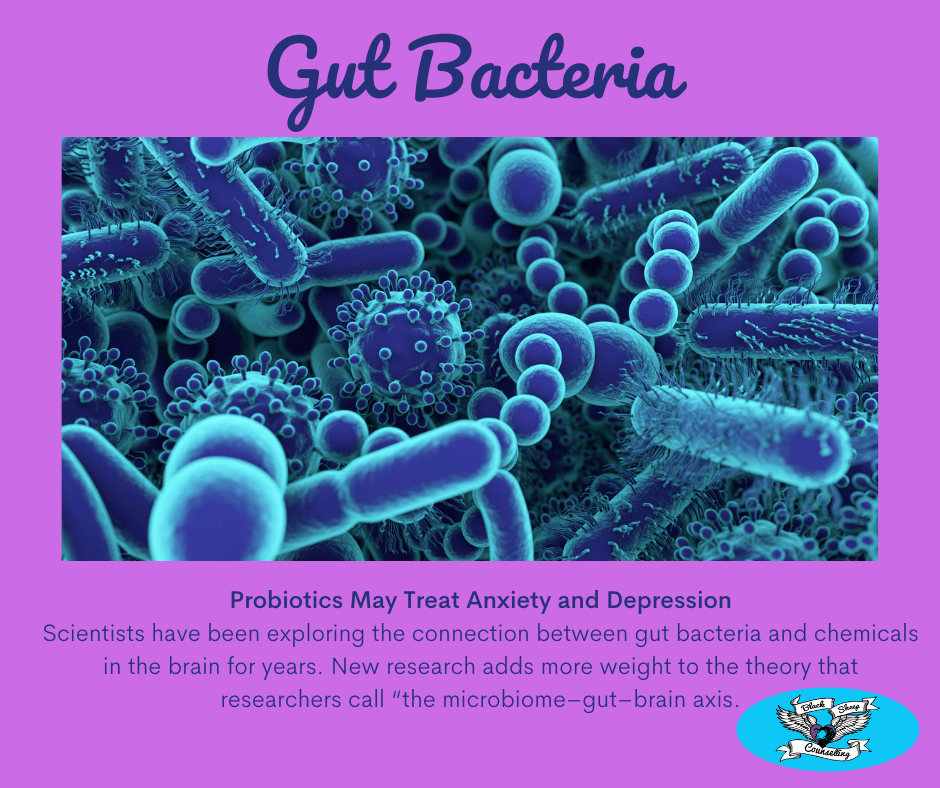
HORMONES: Prolonged emissions of stress hormones (such as cortisol and ghrelin) creates greater reactivity to stress, long-term damage to cells, structure of the body, and hormonal glands such as thyroid.
ADDRESS HEALING by activating happiness chemicals:
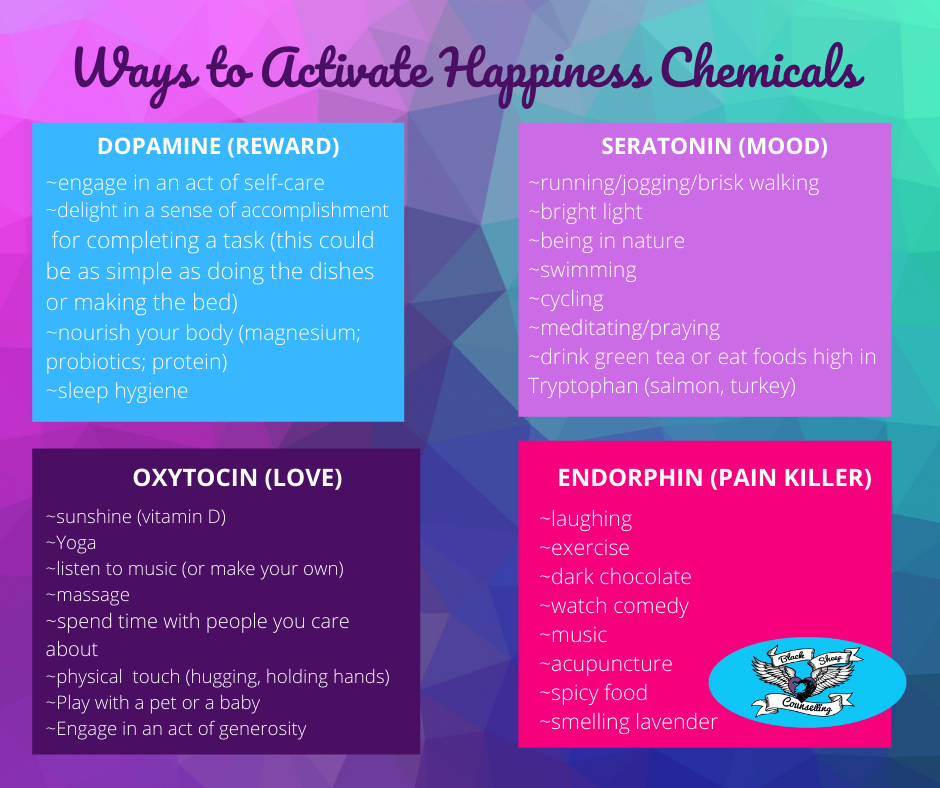
TOXIC ELIMINATION: Intestines and kidneys may be less able to eliminate toxins due to slow gut and unbalanced gut flora.
ADDRESS HEALING by engaging in saunas, epsom salt baths, and salt float therapy.
NERVOUS SYSTEM: Overactive sympathetic nervous system, and reduced activity in the parasympathetic nervous system, impeding ability to restore needed balance back to the system.
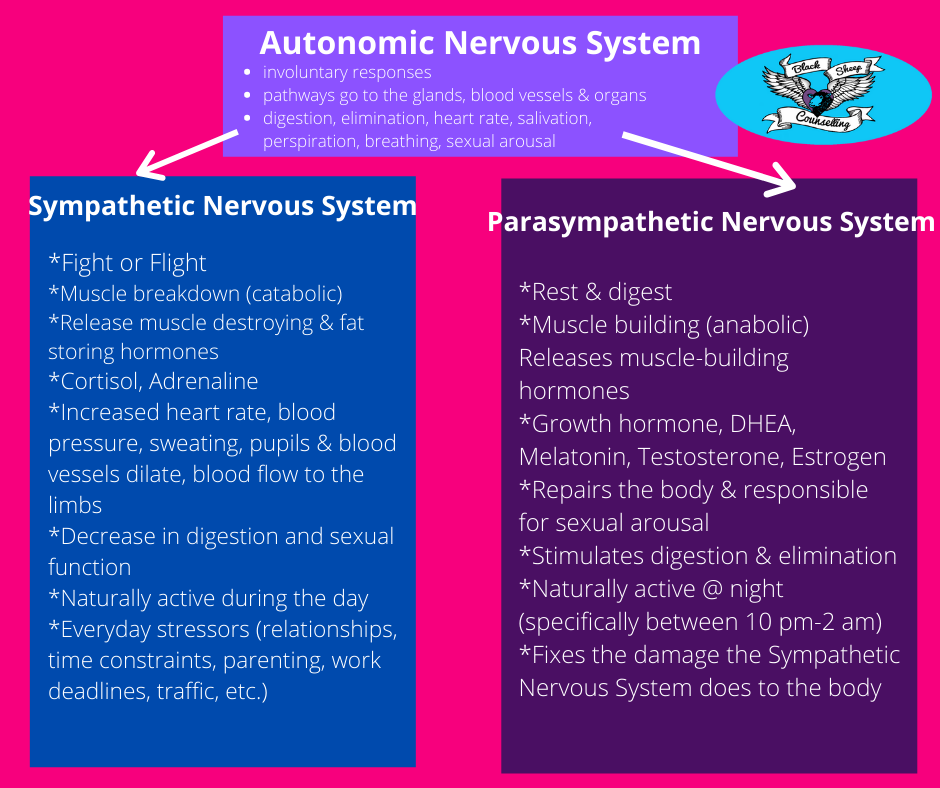
ADDRESS HEALING with Yoga, Breath Work and Physical and Emotional Regulation. Here are a couple of de-stressor techniques to try:
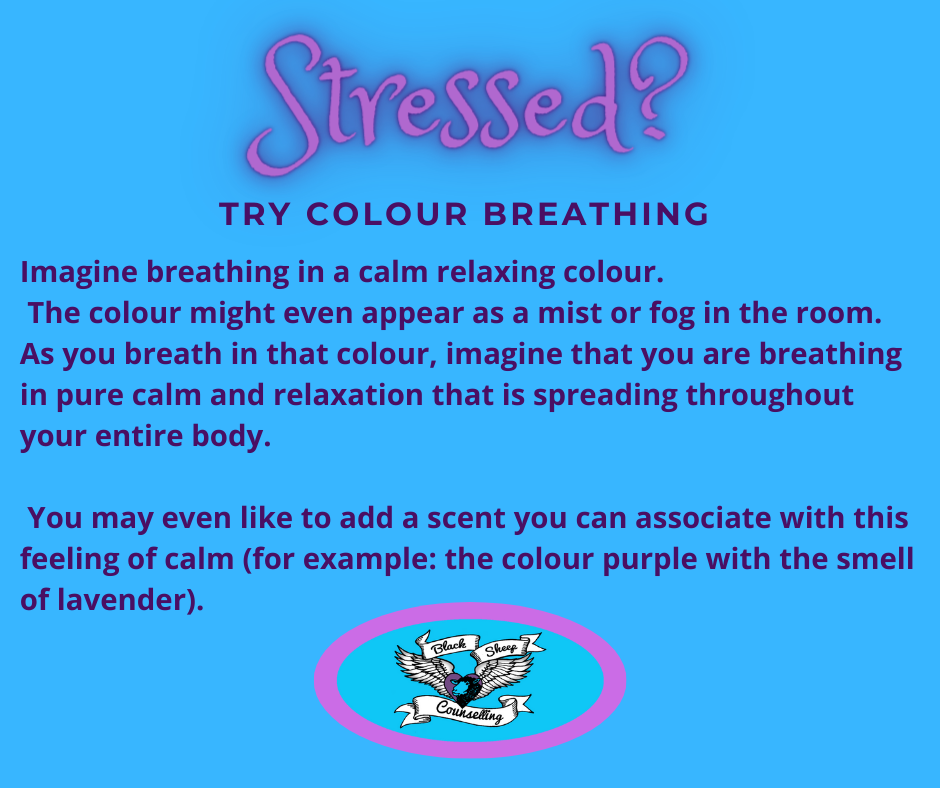
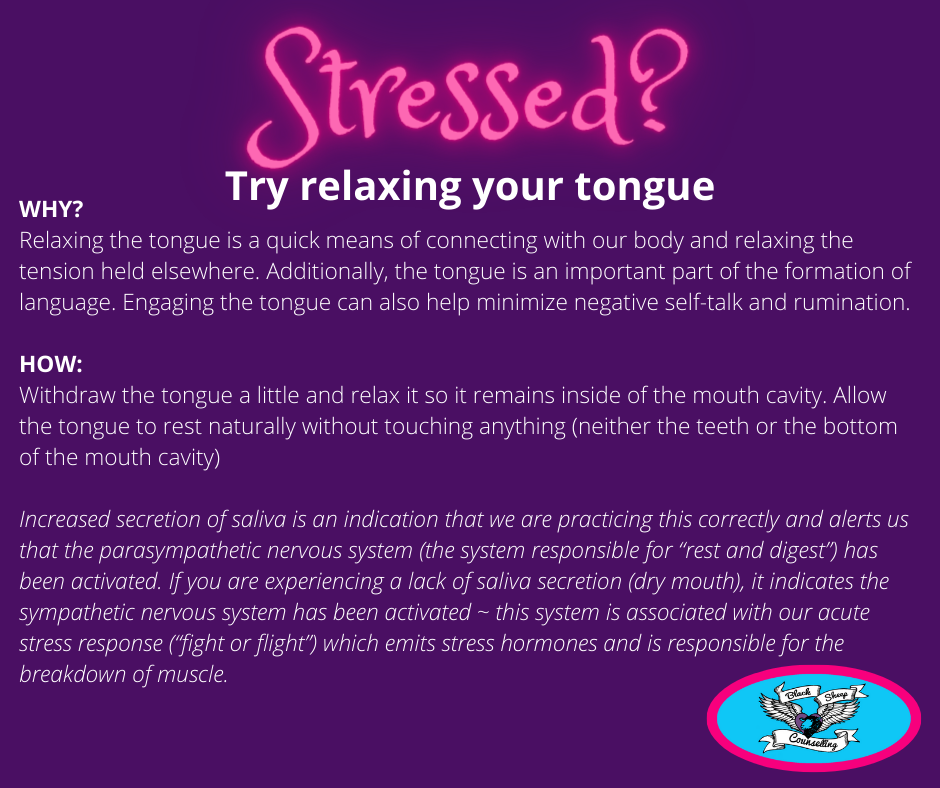
IMMUNE SYSTEM: Resistance to the stress hormone cortisol or lower levels of cortisol creates inflammation. This inflammation gives rise to asthma, obesity, cancer, Alzheimer’s and Parkinson’s diseases and autoimmune diseases.
ADDRESS HEALING: Mindful Self-Compassion Practice, Mindfulness, Meditation, Walking in Nature, Sleep Hygiene, Healthy Diet.
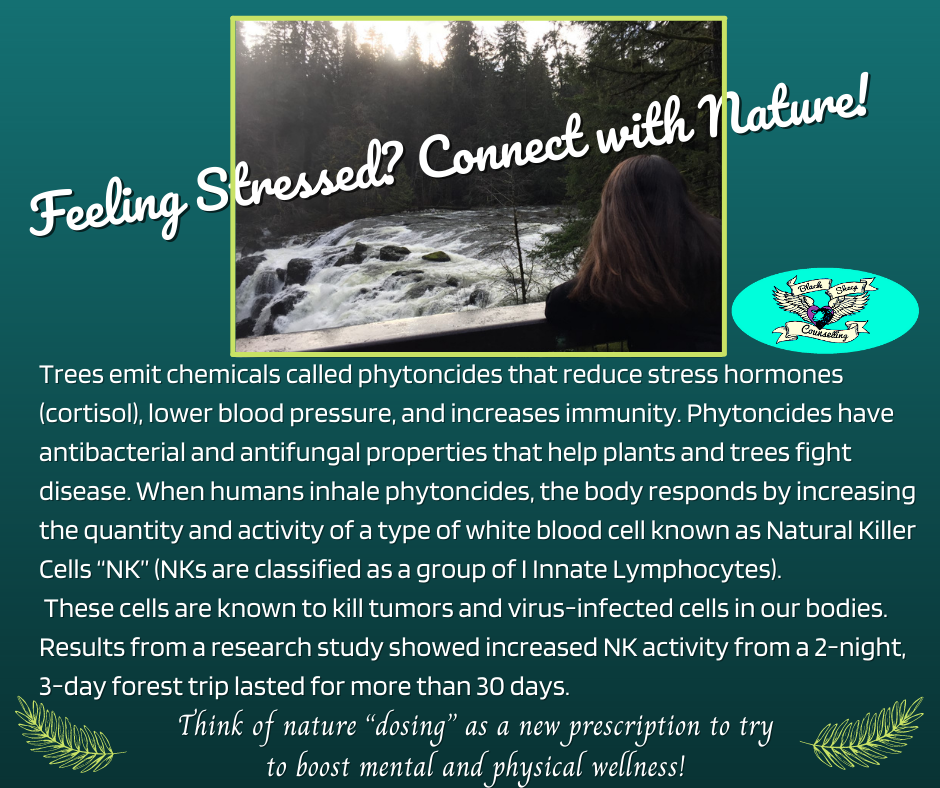
CELLULAR CHANGES: Shortens telomeres which prematurely ages and reduces reproduction of cells and increases risk of cancer. Epigenetic adaptations to danger can cause intergenerational trauma.
ADDRESS HEALING by fostering community, safe environments, and cultivating safe social supports.

References:
Joe Cohen, BS Last updated: April 21, 2019 https://selfhacked.com/blog/32-ways-to-stimulate-your-vagus-nerve-and-all-you-need-to-know-about-it/
havening.org
